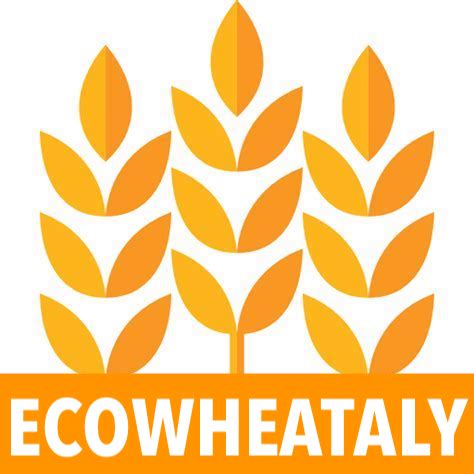Eating bread, pasta, or biscuits is an everyday act. Yet behind every grain of wheat lies a long chain of processes that leave an environmental trace — from irrigation water and fertilizers to machinery, milling, and transport.
Understanding the ecological footprint of wheat does not mean blaming farmers or consumers, but learning how to make the system more sustainable.
What Is the Ecological Footprint of Wheat?
The ecological footprint measures the total environmental impact of a product or activity.
For wheat, this is assessed through Life Cycle Assessment (LCA) — an analytical method that evaluates all stages of production:
- Cultivation (soil use, water, fertilizers, pesticides, energy)
- Processing (milling, pasta or bread production)
- Distribution and consumption
According to FAO data, producing 1 kilogram of soft wheat generates around 0.7–1.0 kg of CO₂ equivalent, while durum wheat averages 1.1–1.3 kg CO₂ eq. due to its cultivation in drier regions and greater irrigation needs.
Water, Soil, Air: The Three Dimensions of Impact
Water
Producing 1 kg of wheat requires about 1,800 liters of water (Water Footprint Network, 2023).
However, most of this is green water — rainfall stored in the soil — while blue water refers to irrigation.
Cutting water waste depends on precision irrigation systems that monitor soil moisture and climate data to determine when and how much to irrigate.
Soil
Intensive cereal production can cause erosion and loss of organic carbon, weakening soil fertility.
Each ton of topsoil lost may take decades to regenerate.
Practices like crop rotation and minimum tillage (reducing deep plowing) help maintain soil structure and nutrient retention.
Air
Most emissions come from nitrogen fertilizers, which release nitrous oxide (N₂O) — a greenhouse gas 265 times more powerful than CO₂.
Techniques such as precision fertilization, biostimulants, and organic residue recycling can reduce emissions by up to 30–40%.
The Paradox of Wheat: Essential Yet Vulnerable
Wheat feeds over 3.5 billion people and provides almost 20% of global caloric intake.
Yet it is also one of the crops most exposed to the effects of climate change — heat waves, droughts, and emerging diseases are reducing yields and increasing production costs.
This creates a vicious cycle: to produce more, we intensify inputs; but the more we intensify, the more we degrade soils and ecosystems.
The challenge is to break this cycle and make wheat part of the climate solution, not the problem.
Solutions: Toward “Net-Zero Wheat”
Strategies to reduce wheat’s ecological footprint are not futuristic — many are already being implemented across Europe and Italy.
- Precision agriculture
→ Using sensors, drones, and satellite data to optimize fertilizer and water use.
Result: fewer inputs, lower emissions, more stable yields. - Crop rotation and conservation farming
→ Alternating wheat with legumes or cover crops improves soil fertility and biodiversity. - Resilient varieties
→ Modern breeding and local landraces provide genetic traits for drought and heat tolerance. - Circular economy
→ By-products such as bran or straw become resources for compost, biomaterials, or bioenergy. - Environmental certification and carbon farming
→ Voluntary schemes reward farmers who reduce emissions or increase soil carbon sequestration.
In Italy, projects like LIFE HelpSoil, the CREA Agroecology Hub, and the Rete Rurale Nazionale have shown that it is possible to cut the environmental footprint of wheat by up to 25%, while maintaining profitability and quality.
Measuring to Improve
Sustainability cannot be declared — it must be measured.
That’s why EcoWheataly develops environmental indicators linking soil, water, fertilizer use, and yields.
The goal is to provide a scientific foundation for policy and practice that safeguard both the planet and the producers who feed it.
Each hectare of wheat tells a story — of balance, energy, and choices.
Transforming that story into a global model of sustainability is not just a goal: it’s a responsibility for our future.
Socurces:
- FAO (2024). The State of Food and Agriculture: Climate and Sustainability Nexus.
- Water Footprint Network (2023). Water Footprint of Crops and Derived Products.
- IPCC (2021). Climate Change and Land: Global Warming and Agriculture.
- JRC – Joint Research Centre, European Commission (2024). Nitrogen Management and GHG Emissions in Cereal Systems.
- CREA (2023). Environmental Balance of Italian Cereal Production Systems.
- LIFE HelpSoil Project (2022). Conservation Agriculture for Soil and Climate Protection.

